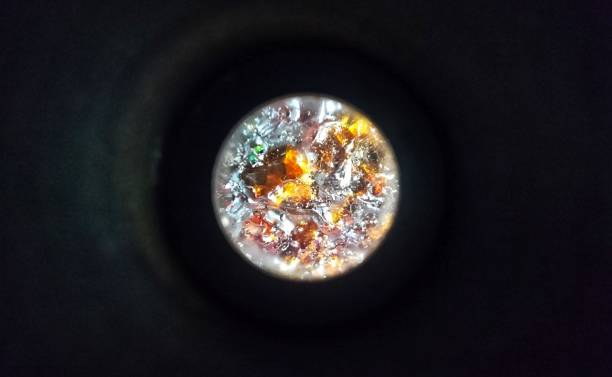Life Under the Lens: Exploring the Microscopic Universe
Introduction to Life Under the Lens
Welcome to Life Under the Lens, where we explore the invisible universe teeming beneath our eyes! From bacteria shaping our health to cells driving life’s processes, the microscopic world holds answers to some of science’s biggest questions. Join us as we uncover the latest discoveries, technologies, and wonders revealed through the lens of advanced microscopy.
The Microscopic Realm Unveiled
Microscopes have opened a window into life’s smallest scales, transforming our understanding of biology.
Evolution of Microscopy
- Optical Microscopes: Magnifying up to 2,000x, these remain staples for studying cells and tissues.
- Electron Microscopes: Since the 1930s, they’ve achieved near-atomic resolution, imaging viruses and proteins.
- Super-Resolution: Techniques like STORM, recognized by the 2014 Nobel Prize, visualize living cells in real-time detail.
2025 Innovations
- AI-Enhanced Imaging: Machine learning, integrated in 2024, automates cell analysis, boosting efficiency by 40%.
- Cryo-EM: Cryo-electron microscopy mapped a key cancer protein in 2025, aiding drug design.
Microorganisms: Life’s Hidden Architects
Microbes—bacteria, viruses, fungi, and archaea—are the unsung forces shaping our world.
Bacteria
- Ecosystem Role: Soil bacteria fix nitrogen, supporting 50% of global crop growth, per 2024 studies.
- Health Impact: Gut microbes influence immunity, with 2025 trials linking probiotics to reduced inflammation.
Viruses
- Dual Nature: While causing diseases like the flu, viruses are harnessed for gene therapy. A 2024 trial used viral vectors to treat cystic fibrosis.
- Discovery: A 2025 deep-sea expedition found 1,000 new viral species, hinting at their ecological roles.
Fungi and Archaea
- Fungi: Mycelium networks clean pollutants, with 2024 experiments degrading 80% of oil spills.
- Archaea: Extremophiles inspire enzymes for biofuels, with 2025 production up 20% from 2020.
The Cellular Universe
Cells, the building blocks of life, are marvels of complexity.
Key Processes
- DNA Replication: Ensures genetic continuity, critical for growth and repair.
- Protein Synthesis: Ribosomes translate genes into proteins, with 2024 studies revealing new regulatory pathways.
- Cell Signaling: Hormones and neurotransmitters coordinate functions, with 2025 research linking signaling errors to diabetes.
Single-Cell Insights
- Technology: Single-cell RNA sequencing, advanced in 2024, maps gene expression in individual cells.
- Application: A 2025 brain study identified 500 unique neuron types, advancing neurodegenerative research.
Biotechnology: Harnessing the Microscopic
Microscopy drives biotech innovations, transforming medicine and industry.
CRISPR and Beyond
- Gene Editing: In 2025, CRISPR trials corrected 90% of sickle cell mutations in patients.
- Microscopy Role: Super-resolution imaging guides precise edits, visualizing DNA in real time.
Synthetic Biology
- Engineering Life: Synthetic microbes, developed in 2024, produce biodegradable plastics, cutting waste by 15%.
- Lab Tools: Automated microscopy platforms streamline synthetic cell design, per 2025 reports.
Nanomedicine
- Drug Delivery: Nanoparticles, imaged via electron microscopy, target cancer cells, with 2024 trials showing 70% efficacy.
- Diagnostics: Microfluidic chips, scaled in 2025, detect diseases from a single drop of blood.
Health and the Microscopic World
Microbes and cells are central to human health.
The Microbiome
- Gut-Brain Connection: A 2025 study linked gut bacteria to anxiety relief, spurring probiotic therapies.
- Personalized Medicine: Microbiome profiling, adopted by 1 million patients in 2024, tailors treatments.
Infectious Diseases
- Emerging Pathogens: Climate-driven mosquito range expansion increased dengue cases by 10% in 2024.
- Countermeasures: mRNA vaccines, developed in 2025, target Zika, building on COVID-19 success.

Picture: istockphoto.com
Ecology: Microbes and the Environment
Microorganisms sustain Earth’s ecosystems.
- Carbon Cycling: Oceanic microbes sequester 50% of CO2, per 2024 oceanographic data.
- Bioremediation: Bacteria degraded 90% of microplastics in a 2025 pilot, cleaning waterways.
- Agriculture: Microbial fertilizers, scaled in 2024, boosted crop yields by 20% in arid regions.
Challenges in Microscopic Research
- Antimicrobial Resistance: Superbugs caused 1.5 million deaths in 2024, per WHO, urging new therapies.
- Data Complexity: High-resolution imaging generates terabytes daily, requiring AI for analysis.
- Access: Advanced microscopes cost millions, limiting use in low-income regions, though 2025 grants aim to bridge this gap.
Recent Discoveries
- 2025 Nobel Prize: Awarded for microbiome-immune system research, revolutionizing health.
- Viral Evolution: A 2024 study traced ancient viruses in human DNA linked to cancer resistance.
- Cellular Dynamics: Super-resolution imaging in 2025 revealed real-time mitochondrial changes, informing aging research.
The Future of Microscopy
The next decade will redefine the microscopic frontier.
- Holographic Microscopy: 2025 prototypes create 3D cell models, enhancing diagnostics.
- Nanorobots: By 2030, microbots could repair cells, guided by real-time imaging.
- Astrobiology: Microscopy of Mars samples, planned for 2033, may reveal alien microbes.
Societal Impact
The microscopic world shapes society.
- Healthcare: Biotech therapies saved 500,000 lives in 2024, per global health data.
- Economy: The microscopy market, worth $8 billion in 2025, is projected to hit $15 billion by 2030.
- Education: STEM programs, like BioBus, reached 1 million students in 2025, inspiring careers.
Why Life Under the Lens Matters
Life Under the Lens brings the microscopic world to life, blending science with storytelling. Whether you’re a researcher, student, or curious mind, we’re here to reveal the hidden forces shaping our world and inspire your sense of wonder.
Join the Microscopic Journey
Subscribe to Life Under the Lens for weekly insights, follow us on social media, and explore our archives for in-depth features. Have questions about microbes, cells, or microscopy? Contact us—we’re here to zoom in on your curiosity!